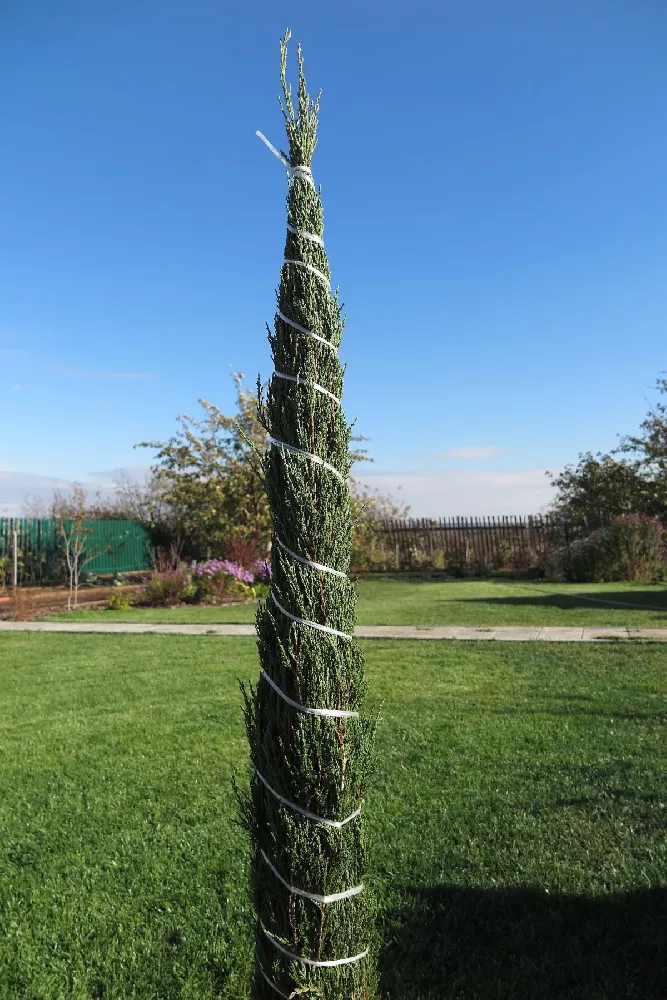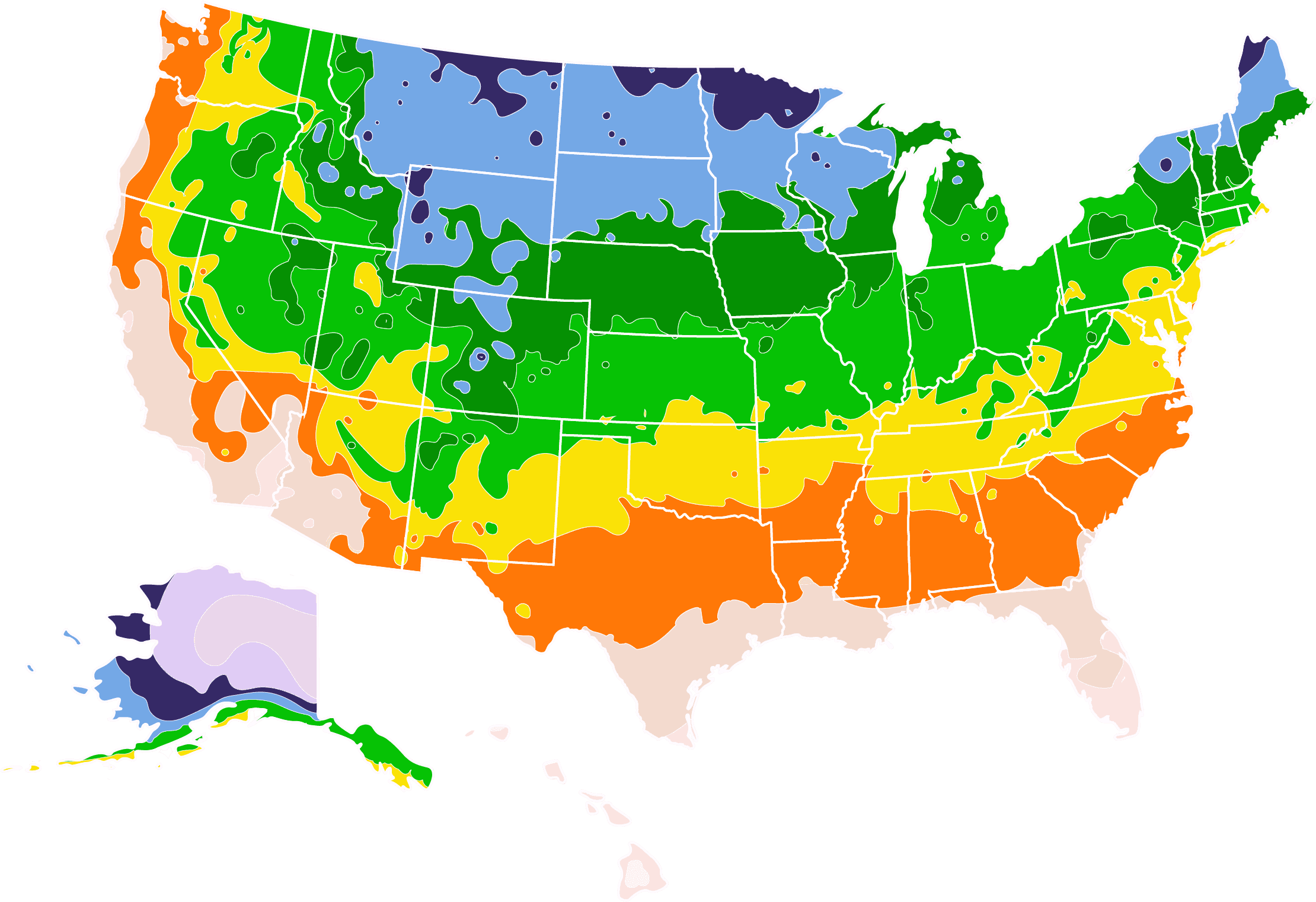- Home >
- Privacy Trees >
- Moonglow Juniper Tree
Moonglow Juniper Tree for Sale - Buying & Growing Guide
- Ships in 1-2 days
- 1-Year Warranty Eligible
- Pots or accessories are not included unless specified in the product options.
Shipping Details:
Once your order is shipped, you’ll receive an email with a tracking number and estimated delivery date. Most orders ship immediately, but some items are seasonal and may only ship in spring or fall. These products are noted on the website.
As its name suggests, the Moonglow juniper tree's foliage is a lovely silvery-green, as if touched by lunar light. And the best part is that you can count on that foliage to give you four seasons of interest in your garden, even during winter, since it is evergreen and does not shed its leaves. This handsome tree offers vertical interest, as well, with a long, lean pyramidal form that tops out at 10 to 15 feet. The Moonglow juniper (Juniperus scopulorum 'Moonglow') is an easy-care tree needing little extra care or pruning. It is hardy throughout almost all of the U.S., and it can handle temperatures as low as -30 degrees Fahrenheit. Need more convincing? Here are three more reasons to order a Moonglow juniper today:
- It grows well in both acidic and alkaline soils, and it isn't picky about soil texture.
- The Moonglow juniper tree is pest- and disease-resistant.
- It makes an excellent windscreen or privacy hedge.
Plant Care
Sunlight

The Moonglow juniper tree thrives in full sun — at least six hours of direct light a day.
Watering
Your Moonglow juniper should receive about 1 inch of water a week, either from rain or supplemental watering.
Fertilizing

Fertilize in spring with a product designed for landscape trees and shrubs.
Planting and Care
Planting instructions
Site your juniper in soil that drains well and receives at least six hours of sun a day. Unpot the sapling and tease out any encircling roots, which can girdle the tree and slowly kill it. Dig a hole that’s as deep as the root ball and twice as wide. Place the tree in the hole, spreading out the roots. Holding it upright and steady, fill in around it with topsoil, tamping down as you go to eliminate air pockets. Water thoroughly. Apply a 2- to 3-inch layer of organic mulch, such as bark chips, around the root zone, being careful that it doesn’t touch the trunk to avoid rot.
Watering and nutrients
When newly planted, water your juniper every few days for a few weeks as it is getting established. Once you see new growth on the tree, taper back to once-a-week watering, giving it about an inch of water each time. During very hot or dry weather, it may need additional watering. Fertilize your Moonglow juniper in early spring with a balanced, slow-release product designed for landscape trees and shrubs.
Pollination
As conifers, Moonglow junipers don’t have flowers. They produce seeds through cones, which are either male or female. Female cones produce small ornamental berries, which contain the seeds. They are very attractive to songbirds and other wildlife.
Pruning
Monitor your juniper for dead, diseased, or damaged limbs, and trim these out whenever you see them. The tree needs little regular pruning, and will naturally grow into a tall, thin pyramidal form. If needed, it accepts light pruning to neaten up the shape, but shouldn’t need heavy annual pruning.
Pests and diseases
Pests that may appear on your juniper include aphids, bag worms, and spider mites. Mild infestations shouldn’t bother a healthy tree. Consider spraying your tree with the hose to dislodge them, or you can release predatory insects, such as ladybugs and lacewings, that will eat pests. Diseases of the juniper include twig and tip blights, which often occur during warm, rainy weather and are fungal in nature. Planting your tree where it will have good air circulation can help you avoid these diseases —, and, when watering, aim your hose for the base of the plant rather than the leaves. Fungicides may also help.
Achieving maximum results
If you have a small spot that you’d like to lighten up or are looking for a way to add some style to your patio, consider growing a Moonglow juniper in a container. Although a container-grown juniper won’t grow as large as one planted in the ground, it should thrive if given adequate water and nutrition. Choose a pot that is roughly twice the size of the tree’s root ball, and use a good-quality potting mix. Keep in mind that pot-grown plants often require additional watering, as the roots dry out more easily. If your tree is getting too big for its pot, you can either unpot it and trim back roots, or move it to a slightly larger pot.
FAQs
Where can I grow a Moonglow juniper tree?
This tree grows well in all but the most southern portions of the continental U.S., and it is hardy in USDA hardiness zones 3 through 8. The Moonglow juniper tree can handle temperatures as low as -30 degrees Fahrenheit, which means it will also grow well throughout much of Canada and even parts of Alaska.
How is a Moonglow juniper tree best used in my landscape?
A Moonglow juniper makes an attractive focal point in a front garden, and it's well suited because of its narrow width for use as a foundation planting. It is at home in Asian- and Mediterranean-inspired gardens or at the corner of a property with underplanted perennials. Multiple trees planted with little space between them serve as an excellent privacy screen or border planting.
When is the best time to plant a Moonglow juniper?
That depends on your climate, but generally, spring and fall are the best time to plant trees. If you live in a hot southern climate, it's better to plant your juniper in the fall so it has some time to become established before facing blistering summer weather. In northern regions, spring is a good choice, as your tree will be able to spend the summer months acclimating to its site.
Compare Similar Products
You can't add more Product Name - Product size to the cart.
OK









